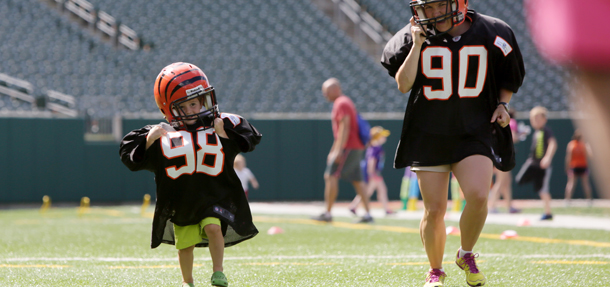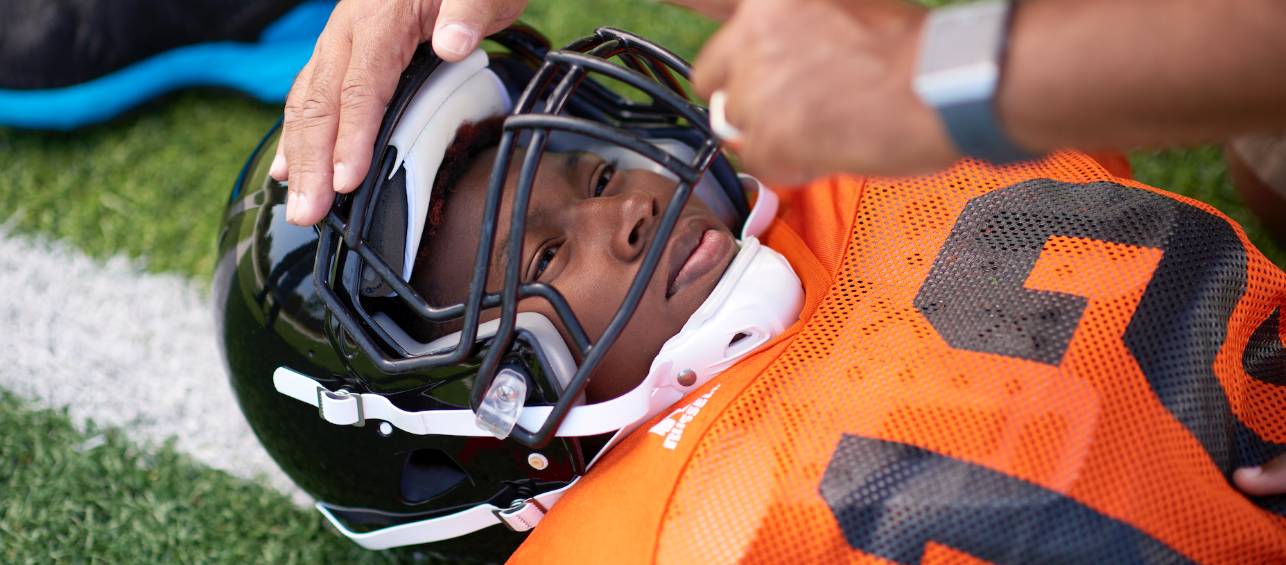You might be asking yourself why a Cincinnati Children’s researcher would be interested in NFL concussion rates. I realize that the connection might not be immediately apparent. Sure, I love football and even played in college, but that’s not why I recently published a paper in the Journal of Sports & Physical Therapy on concussion rates related to altitude or why I’ve invested so much of our research efforts into this field of study.
This latest research shows that NFL players on fields at higher elevations – more specifically greater than 644 feet above sea level – received 30 percent fewer concussions than players on a field at a lower elevation.
Our research team conducted a similar study this past fall on high school football players related to concussion rates and altitudes and had similar results. We wanted to see if the highly-regulated and publicly-available NFL concussion data would yield the same outcome. It did.
So what can we conclude from analysis of these studies? We believe that these NFL players received fewer concussions at higher altitudes because of the higher elevation’s physiological effects on the brain.
Let me step back for a second and describe the anatomy of the brain. It has a lot of room to move around in the skull – it’s not a tight fit. Imagine packing something breakable in order to ship it. You would wrap it in bubble wrap – maybe even put cardboard inside of the box to keep the breakable item from moving around in the box, right?
The brain needs that same type of bubble wrap packaging to prevent concussions, but we know that we don’t walk around with bubble wrap in the skull. Consequently, when an athlete stops and starts suddenly – or even collides with something else – the brain “sloshes” inside of the skull. That’s essentially what happens when an athlete experiences a concussion.
So, let’s go back to our NFL concussion study. We speculate that playing football at higher altitudes may increase the blood volume in the brain, thereby expanding its volume in the skull, i.e., making it more confined, and, therefore, creating a more snug fit inside of the skull. It is like “bubble wrap” for the brain, helping to protect it from a concussion.
You might ask, “Is this dangerous for my child to play sports with increased blood volume in their brain?” Only if you think it is dangerous for them to lie down. We suspect the changes are similar to the intracranial blood volume found as your child sleeps or yawns.
The implications of this study are exciting. While it’s not realistic for all football players to host their games in Denver, we aspire to find a solution that would mimic the effect of higher altitude on the brain from inside the cranium, potentially decreasing or even preventing concussions from happening at all.
This research couldn’t have come at a better time. More and more parents are limiting the types of sports they allow their children to play because of the potential for concussions and injuries. In fact, USA Football, a national governing body partially funded by the NFL, stated that players ages 6-14 dropped from 3 million to 2.8 million in 2011 alone.
It makes sense. As parents we should be taking steps to keep our children safe. And many sports do have the potential for injury. However, I worry about the flip side; what about the detrimental effects of inactivity? And, what about the trends:
- growing childhood obesity rates
- less participation in sports
- too much TV and screen time
- less recess
It’s a recipe for inactivity, resulting in adult diseases happening earlier in childhood.
As director of sports medicine research, it’s my aim to create more opportunities for kids to be active by making sports safer. Hopefully, fewer concussions at the NFL level will eventually translate into more kids playing football at the peewee level. Our latest research on NFL concussion risk decreasing relative to higher altitude is a step in the right (and safe!) direction.





